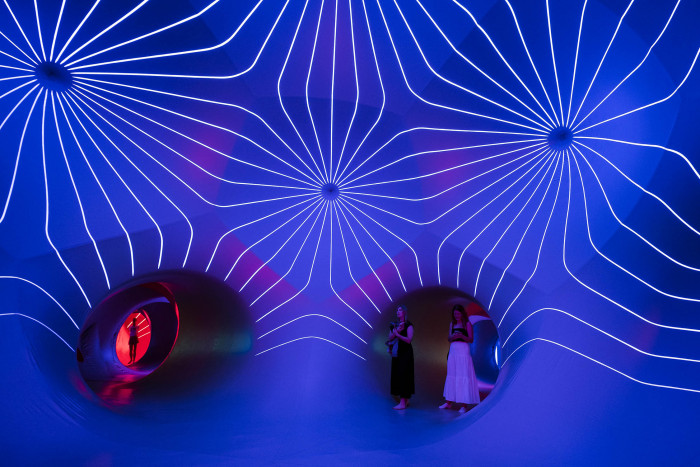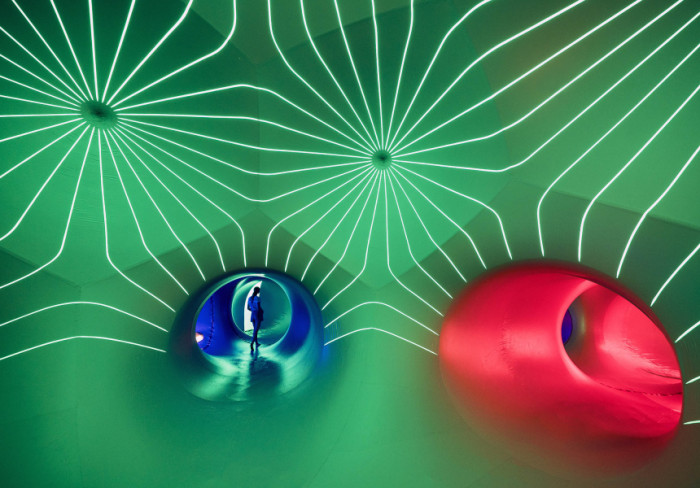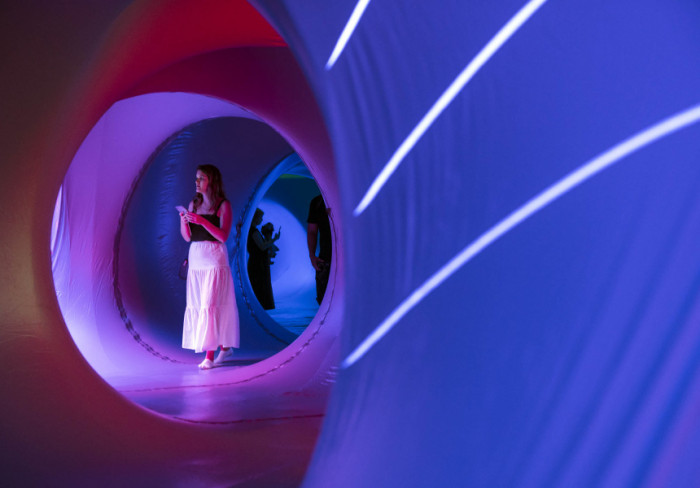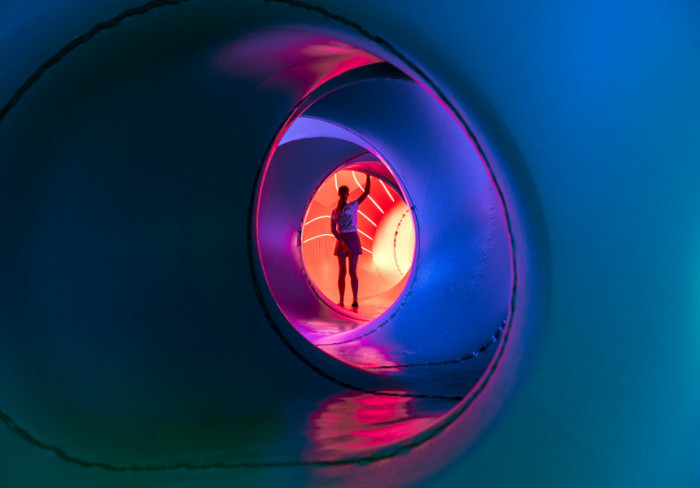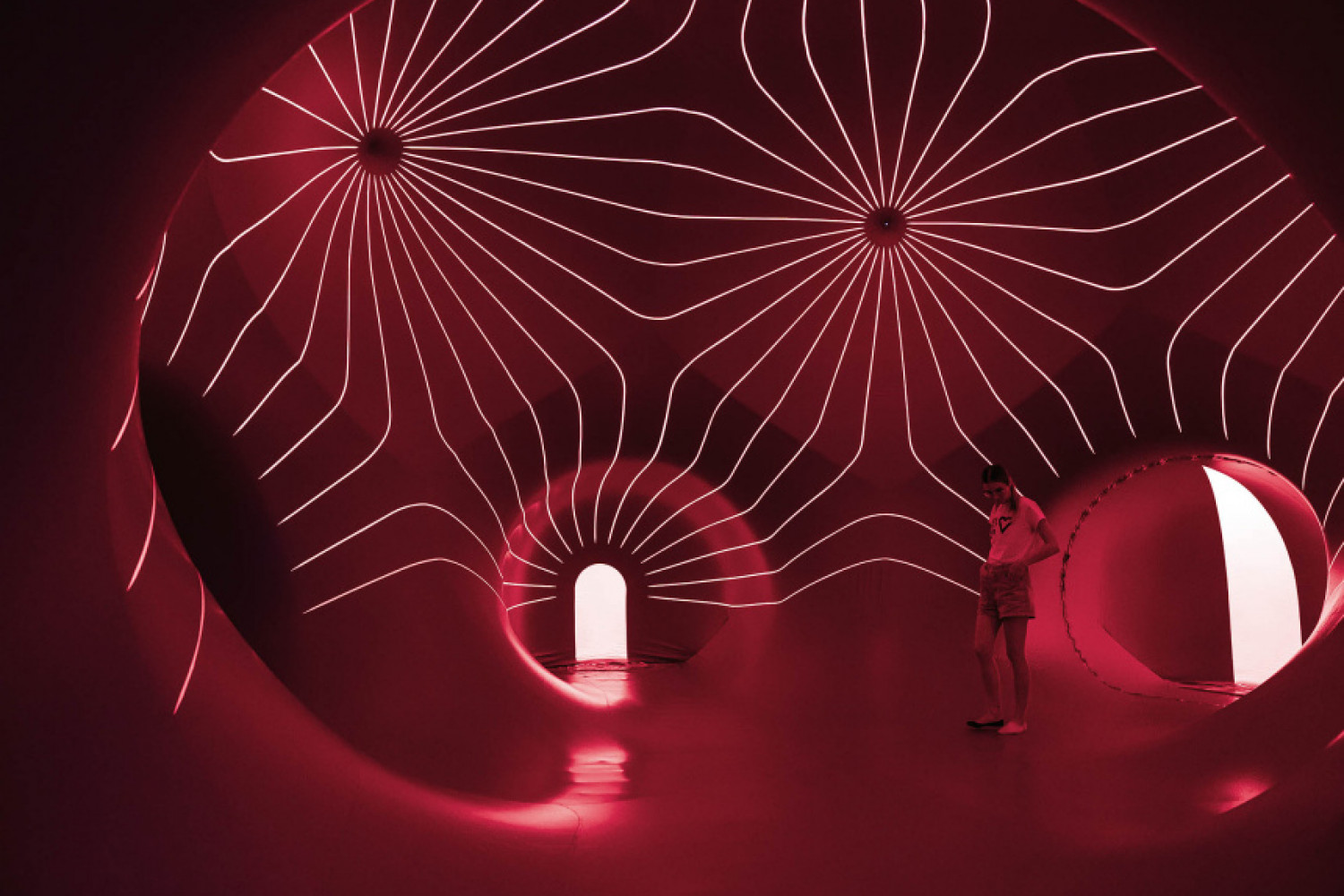
Art-inspired activations are one way of elevating brand-audience relationships. The success of art-driven marketing events stem from their highly engaging, memorable, and shareable nature.
For many, it can be draining to be constantly exposed to advertisements detailing how you should buy this or do that. Art installations, however, are spectacles that open eyes and capture imagination. In the visitor’s afterglow of the experience, the company sponsoring the project become associated positively with the content. The vibrancy of the event becomes an extension of the brand’s identity, highlighting their strengths and capabilities.
Art-centric marketing events step away from conventional advertising modes that rely on ‘telling’ rather than ‘showing.’ It is an engaging form of brand promotion where goods and services are placed in a real world context and showcased in physical spaces.
The outdoor exhibition Elysium Arctic at the MuSEAum is a fantastic example of how creative art installations can add to brand impact.
Backed by the Australian National Maritime Museum in Sydney, wildlife photographers, explorers, and conservation advocates teamed up to deliver an outdoor photographic exhibition of the Arctic. Displayed on the Darling Harbour foreshore, the photographs captured the beauty of the polar north’s wildlife and scenery but also its threatened existence.
The culturally compelling content is a great way to stress the importance of biodiversity conservation efforts while also creating brand traction. The visual journey highlights the strengths and capabilities of the Australian National Maritime Museum and becomes an avenue for encouraging higher visitor numbers (as you walk along the foreshore, why not pop into the museum to learn more?)
It is no stretch to say that this approach to art-based, experiential marketing is highly memorable. Immersive installations call on all of a visitor’s senses. It shifts the experience of merely being a spectator to being actively involved, leaving a lasting impression and forging lifelong memories.
This is further echoed in the Dodecalis Luminarium installation at Darling Square, Sydney as part of the 2020 Sydney Festival. This innovative art activation is integrated into a broader festival program and functions as a way to draw foot traffic into this festival precinct. Architects of Air designers Alan and Meko Parkinson created a kaleidoscopic maze of light and colour in Darling Harbour’s Tumbalong Park. Drawing on the geometry of a dodecahedron, the inflatable installation is a series of weaving tunnels and domes flooded with other-wordly natural light projections.
Tumbalong Park and the broader Darling Harbour area are well integrated into the international visitor experience but less so in the local tourism scene. Owned and managed by Place Management NSW, the precinct hosts cultural events and retail experiences that are very much oriented towards international visitors.
Dodecalis Luminarium, alongside other Sydney Festival events and installations, has been one way of attracting Sydneysiders back into the city centre. The high impact walls of colour and light fosters an audience that also stays and enjoys the retail and hospitality experiences Darling Harbour has to offer. Vibrant art installations have proved to be a viable way of re-energising precincts for broader economic gain.
This effect has also been well observed in the Silo Art Trail based in the Wimmera and Mallee region. Spread across 200-kilometres, Australian artists used wheat silos as a canvas to celebrate the cultural experiences of regional Victoria; bringing thousands of visitors into the area, boosting local tourism and benefitting local businesses.
Not only do audiences experience these kinds of installation in real time, but they also take photos and share with a network of family and friends via social media. In this way, art-inspired activations can easily reach people that are not physically present. It almost avoids the necessity of conducting paid ad campaigns on social media platforms when attendees can promote and share the work through their own individual social channels. This increase in exposure can be a contributing factor to more customers and wider brand recognition.
From enhancing individual and community wellbeing to delivering economic rewards where it is needed, a lot of good can come from art-inspired activations and brands being hand in hand.
